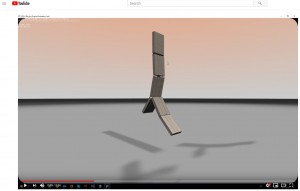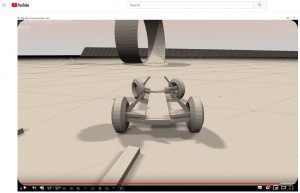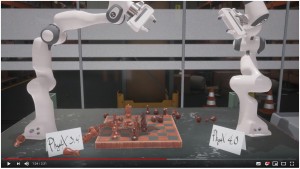PhysX tip: pos vs vel iterations
January 17th, 2019
PhysX tip: “position” iterations and “velocity” iterations are not equally important. My rule of thumb as a user: don’t bother increasing the velocity iters, leave it to 1. Focus on the position iter only. 4 for regular bodies and 16 or 32 for jointed objects give good results.
Posted in Physics, Programming | 1 Comment »
PhysX tip: PxSceneDesc::dynamicTreeRebuildRateHint
January 17th, 2019
PhysX tip: speaking of fetchResults(), don’t forget PxSceneDesc::dynamicTreeRebuildRateHint. Increasing that value can make fetchResults() faster. YMMV here but you can often increase this to 10x the default value without issues.
Posted in Uncategorized | Comments Off
PhysX tip: PxSceneQueryUpdateMode
January 17th, 2019
PhysX tip: are you calling simulate() multiple times per frame? Maybe for sub-stepping? Then you can use the newly introduced PxSceneQueryUpdateMode enum to only update the SQ system in the last substep. That can make “fetchResults” faster for the N-1 first substeps.
Posted in Physics, Programming | Comments Off
PhysX tip: use a scratch memory block
January 17th, 2019
PhysX tip: pass a scratch memory block to the simulate() function! Even if it’s just 16 or 32K, it will help reducing the amount of temporary allocations. Just do it. Now.
Posted in Physics, Programming | Comments Off
PhysX tip: contact distance for joint limits
January 17th, 2019
PhysX tip: beware of the default “contact distance” param for joint limits. By default it’s setup for performance rather than sim quality, and it ignores limit-related constraints until you’re about to reach them. Instead, set them up so that limits are always “active”.
Posted in Physics, Programming | Comments Off
PhysX tip: D6 or dedicated joints?
January 17th, 2019
PhysX tip: D6 or dedicated joints? The dedicated joints like PxRevoluteJoint can be a wee bit faster on the CPU because their “solver prep” functions are simpler. But only D6 joints are fully-accelerated (joint shaders running on the GPU). Minor bit of trivia that you can ignore.
Posted in Physics, Programming | Comments Off
PhysX tip: per-actor number of iterations
January 15th, 2019
PhysX tip: the number of solver iterations is a per-actor parameter in PhysX. It is NOT a global parameter. So you can e.g. use 32 iterations for jointed objects and 4 for debris, in the same scene.
Posted in Physics, Programming | Comments Off
Jacob’s Ladder test
January 14th, 2019
With PhysX 4.0 / PEEL 2.0.
Jacob’s Ladder test

Posted in Physics | Comments Off
PhysX 4.0 in PEEL 2.0 showreel
January 12th, 2019
Can you tell I’m an ex-demomaker ? 
PhysX 4.0 in PEEL 2.0

Posted in Physics | Comments Off


